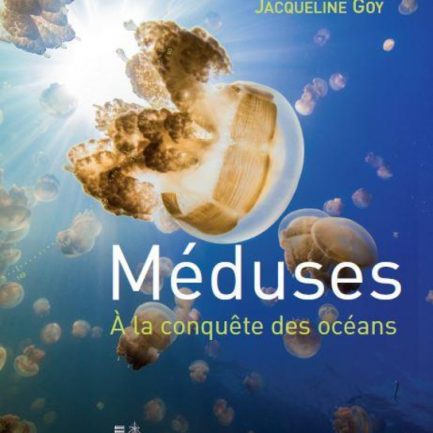A robust life cycle...until immortality?
- Home
- Actualités
- A robust life cycle…until immortality?
A simple yet complex organism, the jellyfish is often feared by bathers but fascinates scientists. There are over 1,000 species of jellyfish, and little is known about most of them. Nonetheless, their capacity for survival, adaptation and reproduction seems unrivalled. Some are even believed to be ‘immortal’.
Jellyfish have reproductive superpowers
Jellyfish represent the first manifestation of sexuality as a mode of reproduction for multicellular animals. There are male and female jellyfish. The gonads are formed in close relationship with the gastro-vascular system. The male gonads produce sperm and the female gonads produce eggs. Most of the time, the reproductive cells are discharged directly into the sea where fertilization takes place. But in some species of jellyfish, fertilization is internal. Sperm released into the sea are ingested by the females and reach the eggs to fertilize them. The female then lays an egg. Pelagia noctiluca, for example, discharges large 0.3 mm eggs through its mouth, which are clearly visible to the naked eye. There are hermaphroditic organisms, possessing both sexes. This is the case of Chrysaora hysoscella, a very large jellyfish from the Atlantic coast. However, the male elements are always earlier than the females, which does not prevent self-fertilisation.
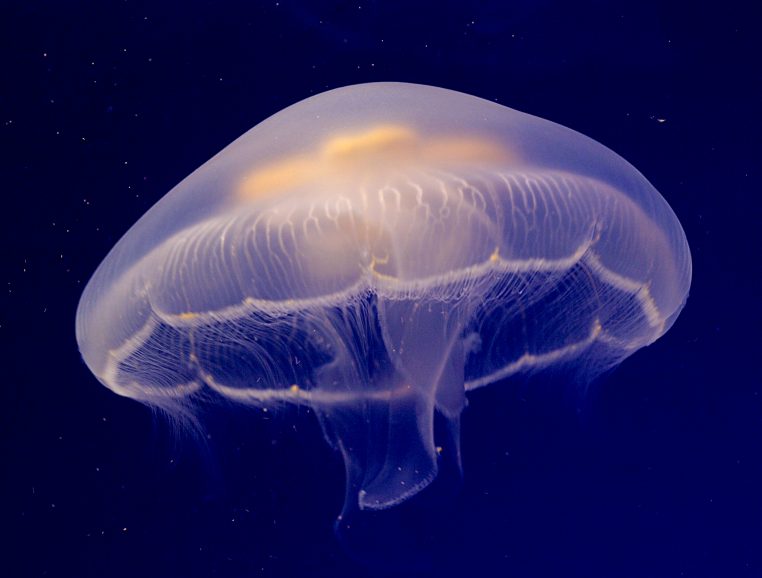
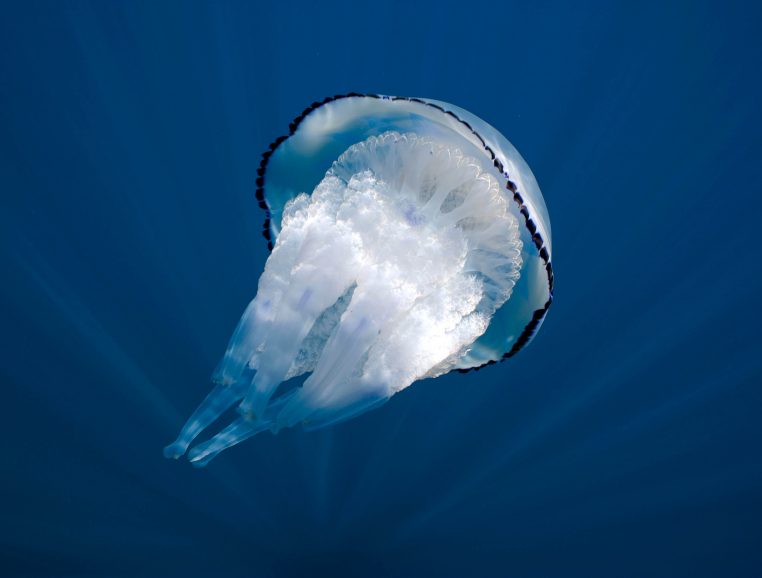
Do jellyfish travel the seas for their entire life?
Most jellyfish have two stages in their life cycle. The fixed stage is called hydrarium. The jellyfish is fixed on the ground, motionless. Some jellyfish have only one fixed stage; for others, this stage is cyclical. The free stage is called a jellyfish, which can be confused with the jellyfish as an animal.
The early stages of development are identical to hydromedus and scyphomedus, although they have a different life cycle. After fertilization, the egg evolves within a few hours into a ciliated larva called a planula.
The budding of hydromedusas and siphonophores
In hydromedusae, the planula falls to the bottom and settles there. It then transforms into a small polyp with stinging tentacles and a single central orifice, which is both mouth and anus. In hydromedusae and siphonores, such as the physalie, a budding phase then occurs. Once formed, the solitary polyp will immediately produce buds by asexual multiplication. These buds evolve into secondary colonies. This is the beginning of a process that generates a colony of polyps linked together by a canal or stolon. Some of the buds may break off and reproduce a new colony. Some species become invasive, such as the Clytia.
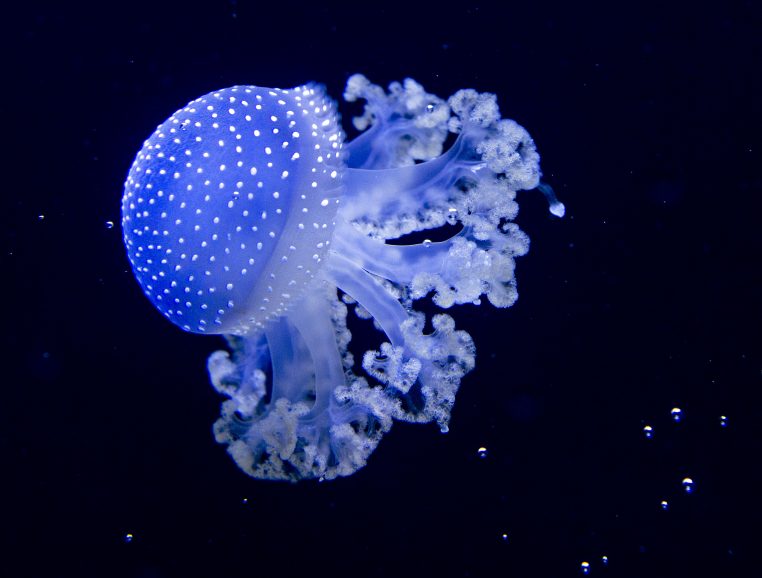
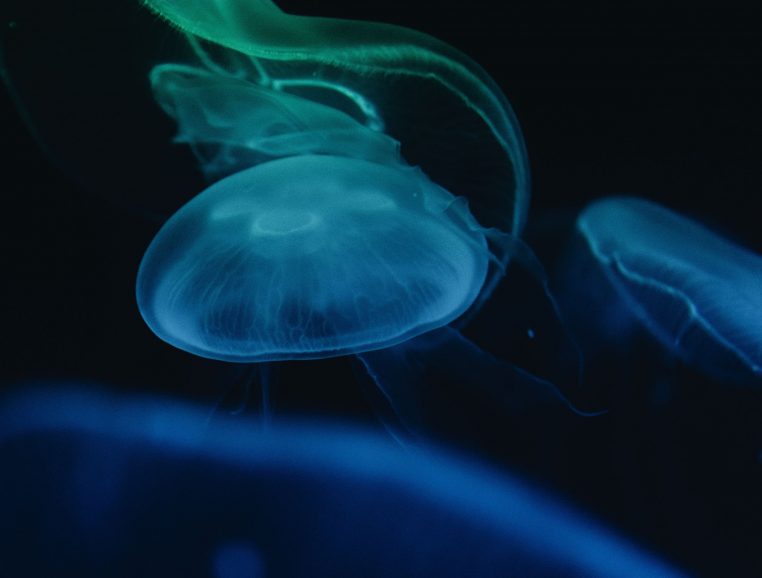
The ‘strobilation’ of scyphomedusas
In scyphomedus, such as Aurelia aurita, the planula also falls to the bottom and attaches itself there. It then becomes a polyp of a different shape, called a scyphistome, which can bud and form a small colony. Most of the time these forms are solitary. The food and the temperature favour the budding of jellyfish. Thus, transverse grooves appear on the upper part of the scyphistome, this is the strobilation. One can imagine the scyphostome as a pile of plates as often mentioned in the treaties of zoology. The first segment is released by violent contractions and so on. Called ephyrules, these small jellyfish thus released grow to become adult sexed jellyfish.
Are there immortal jellyfish?
In 1988, a German student discovered Turritopsis. Like most hydrozoans, Turritopsis goes through two life stages: the polyp stage and the medusa stage.
Adult jellyfish produce sperm and eggs. Once fertilized, the egg forms an egg, then a larva which, when it falls, will settle as a polyp. For Turritopsis, the process is a little different. Instead of dying, the jellyfish falls to the ground, where its body folds in on itself, as if in a fetal position. The umbrella reabsorbs the tentacles and degenerates into a gelatinous blob. After several days, it forms an outer shell, a cyst. Then, root-like stolons grow and elongate until they produce a polyp. The new polyp generates new jellyfish and the process starts again.
Turritopsis is thus nicknamed the immortal jellyfish. However, this process is not specific to it. Researchers have observed it in other species such as Scolionema and Craspedacusta. Finally, it should be noted that it has only been observed in the laboratory, when the conditions of the farm were deteriorating.
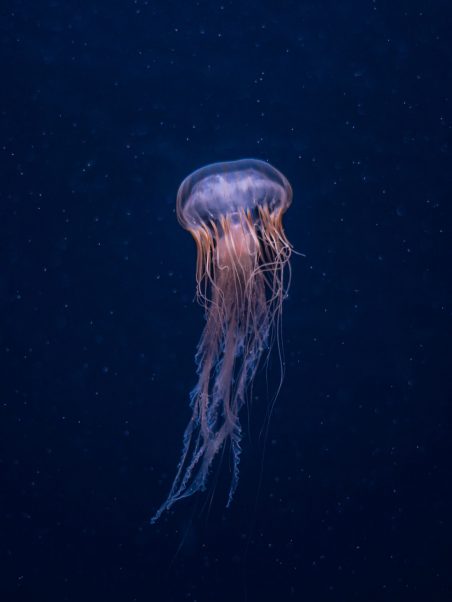
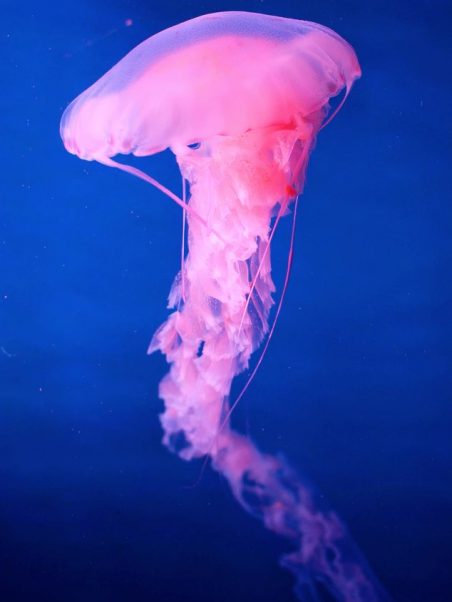
The metamorphosis of box jellyfish
Highly venomous, even deadly to humans, the cubomedus is found in tropical areas. For their reproduction, they are equipped with a spermatophore, a pocket where spermatozoids are grouped. These are deposited by the mouth of the male on a tentacle of the female. The female then collects the sperm with her mouth. Fertilization takes place in the female’s stomach pouches. After fertilization, as with other species, a planula is formed. The polyp from the planula has captive tentacles. These allow it to crawl along the bottom before settling. It then completely metamorphoses into a single jellyfish.







